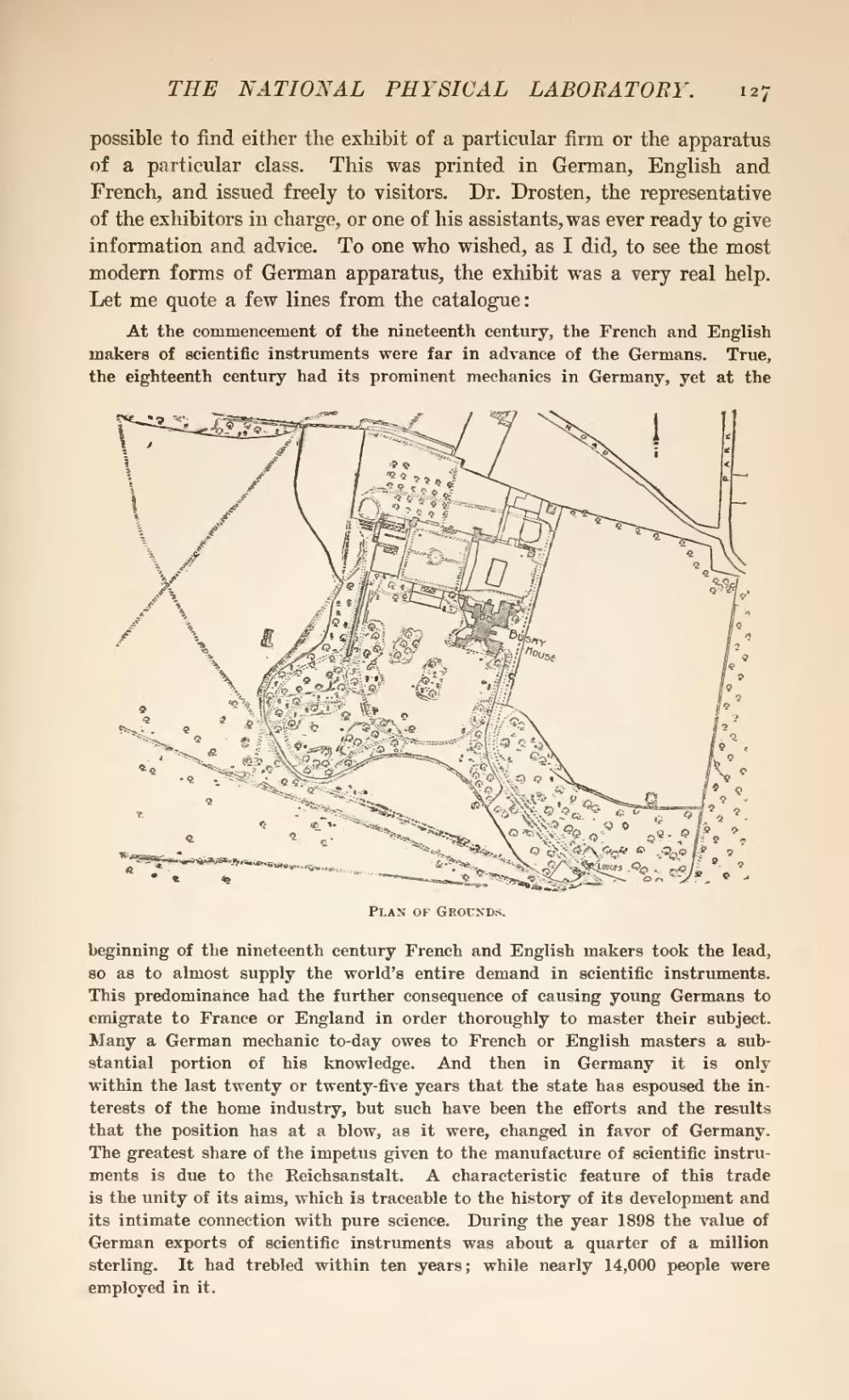THE NATIONAL PHYSICAL LABORATORY.
127
possible to find either the exhibit of a particular firm or the apparatus of a particular class. This was printed in German, English and French, and issued freely to visitors. Dr. Drosten, the representative of the exhibitors in charge, or one of his assistants, was ever ready to give information and advice. To one who wished, as I did, to see the most modern forms of German apparatus, the exhibit was a very real help. Let me quote a few lines from the catalogue:
At the commencement of the nineteenth century, the French and English makers of scientific instruments were far in advance of the Germans. True, the eighteenth century had its prominent mechanics in Germany, yet at the
beginning of the nineteenth century French and English makers took the lead, so as to almost supply the world's entire demand in scientific instruments. This predominance had the further consequence of causing young Germans to emigrate to France or England in order thoroughly to master their subject. Many a German mechanic to-day owes to French or English masters a substantial portion of his knowledge. And then in Germany it is only within the last twenty or twenty-five years that the state has espoused the interests of the home industry, but such have been the efforts and the results that the position has at a blow, as it were, changed in favor of Germany. The greatest share of the impetus given to the manufacture of scientific instruments is due to the Reichsanstalt. A characteristic feature of this trade is the unity of its aims, which is traceable to the history of its development and its intimate connection with pure science. During the year 1898 the value of German exports of scientific instruments was about a quarter of a million sterling. It had trebled within ten years; while nearly 14,000 people were employed in it.
